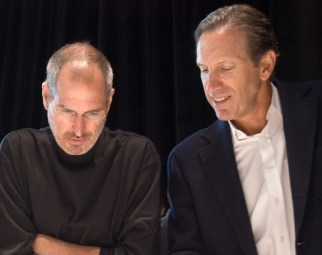#33 Traits of a Leader
July 1, 2013 Leave a comment
Leaders do not only communicate the vision but also lives the vision. Steve Job was known for his appetite for innovation. His hunger for innovation has made Apple where they are today. Why Samsung still find it difficult to compete against Apple despite being the number 1 most innovative company. Simple! They lack the leadership that Steve Jobs brings to Apple. The whole innovative ecosystem and culture that Steve Jobs brings contributes the competitive edge.
2) Leaders make tough calls
Howard Schultz closed down 10 000 stores in the United States to stay in line with the purpose of the existence of Starbucks. These Companies were soaring in revenue but it was growing too fast and slowly they were losing their identity. However, Schultz stayed true to himself and did not let profit get into the way.
3) Leaders develop trust among its people
The best indicator on whether you are made to be a good leader is whether your people asked you out for a “teh tarik” to discuss about their performance. They find every chance they have to discuss on their development. This is an indication that they trust you as someone who can make a difference in their life.
4) Leaders encourage risk taking and celebrate success
For every success, great leaders do not take the credit himself but shares it with its people. Even when things go wrong, leaders take responsibility and strive to learn from failure.
5) Leaders look beyond numbers
Managers tend to achieve budgets and earn big bucks for the company. However, leaders look beyond numbers. Leaders empower its people and push forward its people. They build its people through a common vision and objective beyond profits.
6) Leaders balance short term goals with long term vision
It is so easy to succeed in the short term. Just keep squeezing. It is also easy to succeed in the long term. Just keep dreaming. However, great leaders balance short term profits with long term vision.
Photo taken from: http://kfoto941.smugmug.com/People/People/

